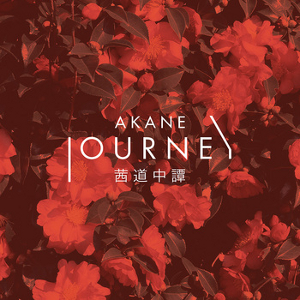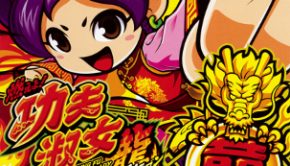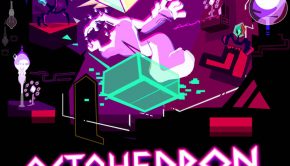Journey -AKANE-
 |
Album Title: Journey -AKANE- |
| Record Label: Brave Wave Music |
|
| Catalog No.: N/A |
|
| Release Date: September 29, 2014 |
|
| Purchase: Buy at Bandcamp |
Overview
AKANE, a musical duo consisting of composer Saori Kobayashi (Panzer Dragoon) and vocalist Yumiko Takahashi (Suikoden), have returned after a seven-year break to create a second album entitled Journey. Inspired by rich imagery, the album features a fusion of Japanese folk music and synth pop background and ornamentations. The combination gives the album a distinctive sound partially related to the Panzer Dragoon series and its spiritual successor Crimson Dragon, both of which composed by Saori Kobayashi. There are also guest appearances of artists including Nobuo Uematsu, Takahiro Izutani, and Jukio Kallio.
Body
Journey opens with the main theme of Crimson Dragon, a piece aptly titled “Dragon’s Journey.” The combination of wooden pipes, mandolin, and synth sound introduces the tone of the album as simultaneously modern and traditional, blending the diverse musical worlds into a cohesive track. The piece introduces various forces during its development, from the exotic vocals of Yumiko Takahashi to the rapidly lilting rhythms of the percussion section, into a beautiful mix. The piece crescendos to even more subdivided rhythms and harmonic layers to the melody. Kobayashi devotees will be delighted by this version of the main theme. For the in-game version, Microsoft controversially rewrote this piece to sound more Hollywood — offering typical orchestration and switching Takahashi’s vocals for western ones. While still an enjoyable piece, it lost most of what is original about Kobayashi’s work. This is AKANE in their purest, richest form.
“A few songs on this album have already been released in some form, but we hope you enjoy these new, reworked, more powerful renditions, which are more characteristic of what we call the ‘AKANE Sound.'” – Saori Kobayashi
One prominent aspect of Journey is the inclusion of vocal tracks. While Takahashi sings in nondescript syllables on “Dragon’s Journey,” most of the other tracks are sung in Japanese. They’re inspired by Japanese folklore, but my lack of knowledge of the language and mythology means that I couldn’t fully absorb this influence and instead mainly enjoyed the pieces for their musical rather than narrative quality. The third track, “Avalon,” is perhaps the most lively, beginning with some warm, shifting tones and quickly shifting to a tropical guitar strumming a Hawaiian-styled ostinato. The opening is quickly met with a jovial melody on a bright, plucked instrument and a flute accompaniment. Eventually the vocalist comes in with the bold, forte tones, switching notes with grace notes and trills. The following track, “Honjo,” brings a more mellow mood back to the soundtrack, using slowly swinging percussion and a series of vocal lines — both lead and backing — to create an almost lounge-like feel, but with a distinctly Eastern setting. The piece breaks up in the middle with a sudden piano solo, improv-style, and returns with a markedly more distinct rhythm, bringing the percussive elements closer to the forefront of the track than they have been thus far.
While almost all of the tracks utilize the same series of instruments, each track features a different aspect of that series. “Nambu” opens with a virtuosic vocal performance, laced with synth effects but still very much a display of vocal talent. Any instrumentation in the track is either background or nonexistent in this portion; unusually for this album, all attention is on a single line of music. A duo of flutes serves as an interlude, but the vocal line returns before the end and takes over again. By the next track, “Tenjiku,” the instruments are back in full force, guitar, drums, and flute, with the vocal line acting as one of the instruments instead of a distinct solo. Expertly recorded and mixed by Saori Kobayashi and Dan Suter, the sound mixing plays into this effect, keeping the vocals subdued and blending into the chorus of instruments. At several points, the flute is louder than the vocal line, and as the piece subsides at the end, the vocals return in a rippling effect, more like a solo instrument fading away than a repeating vocal line.
” In the seven years since the release of our first album […] we have slowly been working on new material alongside our day jobs. As the title of the album suggests, AKANE is a band on a constant journey. We hope you will enjoy this new, mysterious journey with us!” – Saori Kobayashi
“Machi,” the last completely original track of the album before the remixes, features legendary composer Nobuo Uematsu along with the combined synth and folk sounds prominent throughout the entire album. The melody line demonstrates Uematsu’s remarkable ability to create a two-part melody with equally significant and poignant sections. As the piece continues, instruments join the ensemble and create a more complicated rising pattern in the piece than the other tracks. It’s a great adaptation of Uematsu’s original, which was first composed for Sakura Note. The final tracks contain remixes of earlier pieces on the album. “Dragon’s Journey” returns in a piano rendition, bringing back the same melody, but in a somewhat westernised classical setting. The 3/4 tempo of the original song sets up a wonderful base for a delicate piano waltz which gradually increases in complexity over the course of the song using more sophisticated ornamentation and subdivision. Also featured is Takahiro Izutani’s meditative take on “Pirika”, which emphasises the electronic undertones of the album, and hte Kozilek Remix of “Avalon,” which gives a largely subdued rendition of the originally vivacious “Avalon”.
Summary
Under the direction of Brave Wave, Saori Kobayashi and Yumiko Takahashi have created a polished, original, and satisfying album. While the album has essentially one consistent sound from beginning to end, the unique style brings a new flavor to the video game music world, and something that is surprisingly not as common as one might expect of a booming industry largely based in Japan. The album is enjoyable, vivid, and upbeat, and the unusual combination of elements give the album an idiosyncratic style much-needed in the current music industry. The album is available to buy in physical and digital form at various retailers, including Bandcamp, now.
Do you agree with the review and score? Let us know in the comments below!
4.5
Posted on October 2, 2014 by Emily McMillan. Last modified on October 2, 2014.














